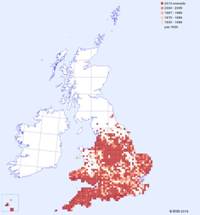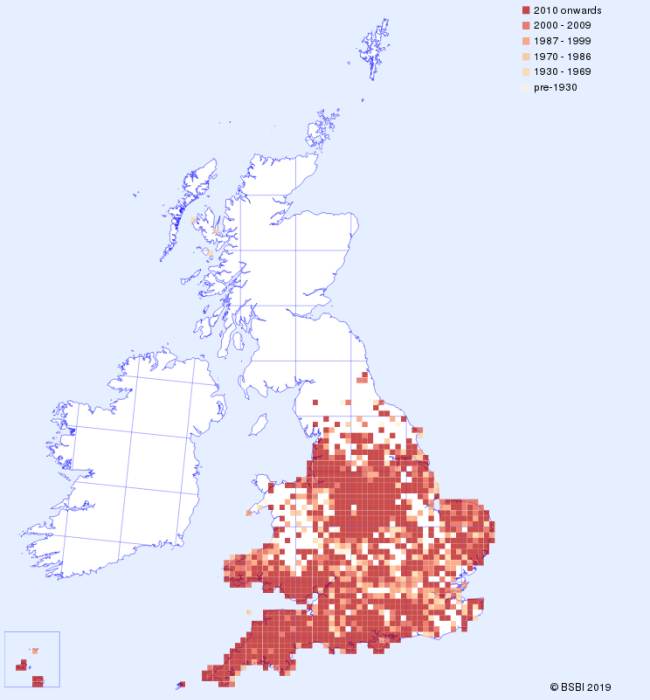The Southern Marsh-orchid is tolerant of a wide range of predominantly alkaline habitats, but occasionally it strays into mildly acidic parts of bogs and damp heaths. Best known in the south and often found on riversides and in damp meadows, this orchid also grows in abandoned quarries, on roadside verges and in some old industrial sites; in suitable places it can occur in large numbers. Dactylorhiza praetermissa is extremely variable in appearance and readily hybridises with spotted orchids, causing much confusion during identification. A 'typical' plant would be a robust, thick-stemmed orchid with broad unmarked leaves and relatively large pink-to-purple flowers. It is worth bearing in mind, however, that very small plants can also occur in drier marginal habitats such as chalk grassland. In Britain and Ireland, the Southern Marsh-orchid flowers between mid May and mid July. This species is endemic to Europe, and on the mainland it can be found in Scandinavia, northern France and southwards as far as northern Italy.
| Distribution Map | Key Features | |
 |
Records for the Southern Marsh-orchid from BSBI are shown on the map with most recent in front. (Hover the mouse over the small map to expand it.) |
Plant: 20 to 70cm tall, but the larger plants may be due to hybridisation with other species. The stem is markedly stout, green and hollow. |
Image Gallery for Southern Marsh-orchid Dactylorhiza praetermissa
| Pollination | Taxonomy & Hybrids |
The Southern Marsh-orchid is pollinated by a variety of insects, and seed set is good. Plants may also reproduce vegetatively. |
The specific name praetermissa means 'overlooked' - a reference to the fact that it was not recognised until 1914. |
Articles about Southern Marsh-orchid in JHOS
